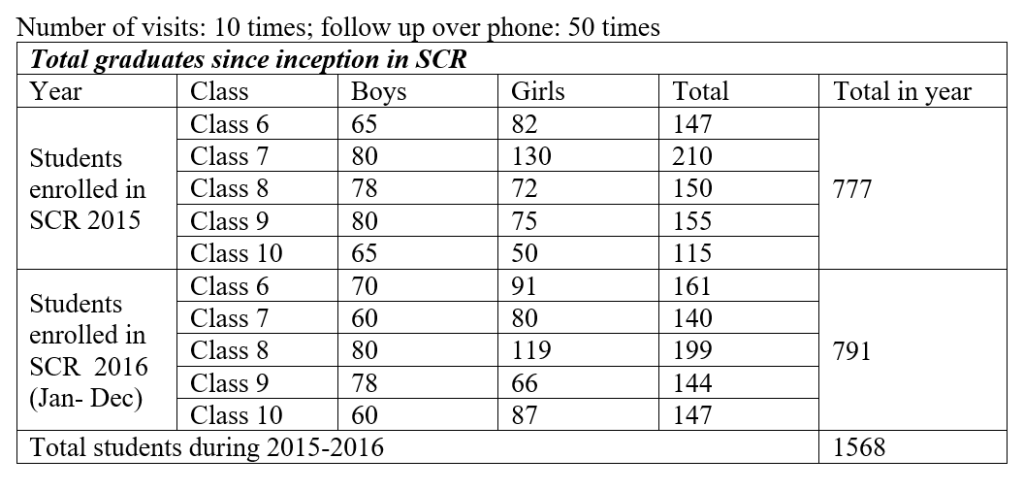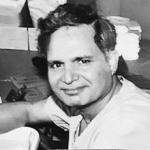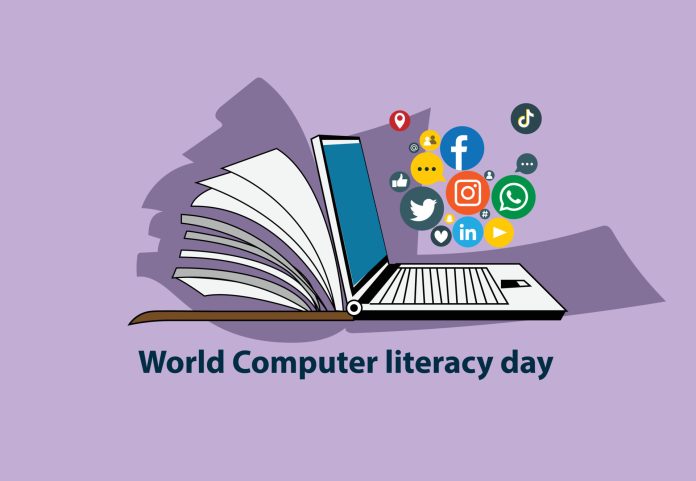I am an expatriate Bangladeshi living abroad for many years. I visit Bangladesh from time to time and do some voluntary work to help improve the school education in the locality I come from. I believe that through education, training and learning new skills people of rural Bangladesh may have the opportunity to come out of the poverty that seem to cripple their lives. In my pursuit to make a small contribution to this end, I came in contact with the New Jersey, USA-based Computer Literacy Program (CLP) volunteers for the underprivileged who have a similar motivation. Here is the story of my journey with those Bangladeshi expatriate volunteers.
Pirkhain Mowlana Ashraf Chowdhury High School was founded in 2002 in Pirkhain, southern Chittagong. The adjoining photograph shows part of the tin-shed brick-wall school building. The school’s first batch completed class (grade) X at the end of 2007 and appeared in the Secondary School Certificate (SSC) examination in early 2008. The 2016 enrolment of the school was over 1050, and based on the performance of the students in the SSC Examination, the school was considered a model that was trying to meet the educational needs of the community.
Chittagong. The adjoining photograph shows part of the tin-shed brick-wall school building. The school’s first batch completed class (grade) X at the end of 2007 and appeared in the Secondary School Certificate (SSC) examination in early 2008. The 2016 enrolment of the school was over 1050, and based on the performance of the students in the SSC Examination, the school was considered a model that was trying to meet the educational needs of the community.
The school infrastructure has grown since its inception. In addition to adding new class rooms, a Science Lab and a library were added. The need for computer education in the school became obvious and accordingly, more land was acquired and a building completed to accommodate the computer class and lab in 2009. All of the above were achieved with the support from the community and Bangladeshi expatriates in Canada and USA.
The next challenge was to secure necessary hardware and start a computer training programme. Around that time period the Bangladesh Government initiated a programme to provide computers to educational institutions. The programme logistics did not allow us to secure computers for a village school. There was no provision for teacher training. I observed computers given to many schools collecting dust waiting to be used. The reason was the lack of knowledge and training of school staff on the use of these sophisticated machines. This experience alarmed us as we started thinking about acquiring computers for the school.
During my January 2009 visit to Bangladesh, I heard about a meeting organized by CLP and DNet, its partner in Bangladesh. I attended the meeting and learned about their Computer Literacy Centers (CLCs) and Smart Class Rooms (SCRs). Under a Private Public Partnership (PPP) Initiative of the Government of Bangladesh they began a project to set up a CLC and a SCR in any eligible high school.
A CLC is a turn-key computer lab with four computers, a structured curriculum drawn by local experts, training for two teachers, training manual and full supervision to address operational issues. In a SCR students have the opportunity to learn from educational CDs that feature sight, sound, and animation with the contents being displayed on a large screen monitor.
I was glad that I was in Dhaka at the time and was able to attend the meeting. What they presented were answers to my concerns about how to start an operational and effective computer training and computer-aided education programme. I immediately signed up as a sponsor for a CLC and a SCR in Pirkhain School, and CLP helped establish both the CLC and the SCR in 2011; the total enrolment and the number of graduates in 2015 and 2016 are shown in the table below.
With the support from the Canadian Association for Bangladesh Development (CABD), based in Winnipeg, Canada, I found the CLP so useful that I convinced CABD, some of my friends and relatives to sponsor the project in their schools and we were able to introduce CLCs and SCRs in 7 more high schools in rural Chittagong.
based in Winnipeg, Canada, I found the CLP so useful that I convinced CABD, some of my friends and relatives to sponsor the project in their schools and we were able to introduce CLCs and SCRs in 7 more high schools in rural Chittagong.
The salient feature of the programme was that it was based on co-operation of multiple partners, such as, 1) a sponsor financing 30% of the cost, 2) Bangladesh Government through its PPP Initiative providing rest of financing, 3) the host school providing computer classroom, furnishings, security and teachers; 4) DNet setting up computers, printers and other peripherals, training the teachers, and providing other technical assistance (trouble shooting and solving computer-related problems). Training the selected teachers in the use of computers was a crucial part of the project, because that prepared them to teach the students.
Overall, I found the Computer Literacy Program to work out very well for most of the schools I was associated with. Our association with CLP-DNet team came as a blessing solving most of our computer related problems. Even when the sponsors did not continue providing the annual maintenance fee, the programme provided trouble shooting advice over phone which kept the centres operational.
I would like to take this opportunity to thank one and all involved with organizing and running the project for so many years with excellent outcome. A report on the performance of the CLC and SCR at the school is provided below. I think, any country like Bangladesh will benefit with more of this type of well-planned program. I think CLP should be considered a model for future development work, especially on the education and training side. I am, however, not sure if there has been any follow-up mechanism to determine the outcome of this project. I wish to congratulate all those who envisioned the program and worked to put into effect.
Report on Pirkhain Moulana Ashraf Chowdhury High School, Chittagong


 Faisal Karim, a graduate of the Pirkhain Mowlana Ashraf Chowdhury High School. Obtained BBA from Jahangirnagar University. Courtesy: Linkedin
Faisal Karim, a graduate of the Pirkhain Mowlana Ashraf Chowdhury High School. Obtained BBA from Jahangirnagar University. Courtesy: Linkedin
Success story
CLC and SCR started in  2011. Every year new students enrolled in this programme gain basic computer literacy training. Over 1500 students received the benefits of computer-aided education from the SCR. The CLC has produced 287 graduates, evenly split between boys and girls.
2011. Every year new students enrolled in this programme gain basic computer literacy training. Over 1500 students received the benefits of computer-aided education from the SCR. The CLC has produced 287 graduates, evenly split between boys and girls.
Teacher’s Comment on SCR
“SCR model is very effective to conduct classroom teaching-learning activity through modern technology. Students get their motivation from technology driven classrooms and eagerly wait to see new videos, animations and Power Point slides. Learners can keep their concentration in class and understand the difficult lessons properly. From one of my experiences, I can say that it is much easier to show the functioning of human heart (A lesson of Class 8 Science book) through animation rather than described it verbally. As a result, it helps them to learn from class room”.
Teacher’s Comment on CLC
“CLC is very important for spreading digital literacy among rural underprivileged students who are not familiar with computer and digital equipment. CLC gives them a chance to obtain basic literacy on computer. I know two students who graduated from CLC and started their own business. One of them started a computer compose, printing and web browser-based business in this locality. Another started mobile repairing business after getting motivation and confidence from this training. More specifically, some of our CLC graduates enrolled in polytechnic institutes, national and public universities.

Farid Uddin Shariff
Dr. Farid Uddin Shariff was a retired orthopaedic surgeon who lived in Winnipeg, Canada, during 1960-2023. He had an outstanding career as an orthopaedic surgeon. More importantly, he was deeply involved in ensuring the well-being of early Bangladeshi settlers and students. He also contributed significantly to the liberation struggle of Bangladesh. This article shows his devotion to the cause of his mother-land even after living in his adopted home in Canada for more than 6 decades. Global Bangladesh published an obituary for him in vol. 1, issue 4. Dr. Shariff penned this article in 2016 and we received it post-houmous through Professor C. Emdad Haque. We express our profound thanks to Professor Haque for sharing this inspiring article by Winnipeg’s beloved Shariff Bhai. May Allah accept him among the righteous and grant him the Paradise for his good works.




